13. Image parameters
13.1. Introduction - 13.2. Basic colors - 13.3. The resolution
13.1. Introduction
At the current level, a computer can thus process the data, store them, recover them. Unfortunately, we still do not have traces of only it makes. All information concerning the definitions, qualities is gathered here... for posting, acquisition and the impression. This will enable us to study in the chapters which follow: graphics card, monitor, impression, scanner and photo numerical equipment.
13.2. Colors of bases
The cameras and it post both information according to 3 basic colors. Data processing (and photographs it) work is with filters (case where one returns of the data: scanner, cameras...), are by cutting out information in 3 equal zones of width on the coding of the point (one by color) in the case of a screen or a video projector. For recall, the digital world can use only combinations of bits which work either with value 1, or with value 0.
In the photo world, the 3 colors of bases are the red, the green and blue. On the other hand, in data processing (and publication in general), the colors are broken up into magenta, yellow and blue. Each point is thus defined by a number of bits which, broken up, gives the 3 basic colors. The superposition of colors gives the whole of the possible colors.

Let us take an example, that is to say a point coded on 12 bits. In black and white, the number of levels of gray will be 212, that is to say 4096 levels of gray (0 correspondent with the black, 4096 with the white). In the world of the color, one obtains 24 levels of each color, that is to say 16 levels per color (a little weak).
These concepts of colors are valid on the level of the screens and graphic accelerator, cameras, scanner, printers... with light adaptations.
13.3. Resolution.
If the concept of color is important, the resolution is as much. The resolution expressed in dpi (dowry per inch, points per inch). It is the number of points posted (or printed) on a surface expressed in inch. An inch equalizes 2,54 cm. In the case of images, it is necessary refer oneself on a surface, and not with a length.
The resolution of a screen is of 72 dpi, the current printers reach in certain models with 2880 dpi (which you must put squared to obtain the number of points (pixel) effective in a surface of 1 inch squared). This gives 321.408 points per cm2.
The more the resolution increases, the more the details are improved. Unfortunately, the number of points cannot increase too much with the sight of technology of the sensors and the printers or more surely with the sight of the size of the files. Let us take a A4 sheet of 21 * 29,7 cm and scan there in mode BMP (not compression) with a resolution of 1440 dpi, each point being coded on 30 bits. This gives us 21*29,7*321.408*30=6.013.865.088 bits. Let us divide by 8 bits for a coding into byte (byte): 751.733.136 byte, is 751.... Megabytes. Fortunately, one uses types of files images compressed to reduce the size. 2 families of compression are found, that which keeps quality (GIF for example) and those which lose a part of quality according to the compression ratio used at the time of coding of image (JPG).
You included/understood it, the image processing is a business of compromise.
You could ask for why an image - photograph is posted better on a screen with a resolution of 72 dpi than to print with 600 dpi? This is due to the fact that the screen is active, it uses a source of light in feedback.
In relation:
- Hardware course: monitor Types and operations of data-processing screens CRT and TFT
- Course: types of printer Operation and maintenance of the printers
- Course: equipment for image acquisition Scanner, numerical camera
|
The continuation of the course hardware 1 > 14. The graphics boards |
The course hardware 1 PC and peripherals. The course Hardware 2: networks, servers and communications
Competences with the service of quality.
